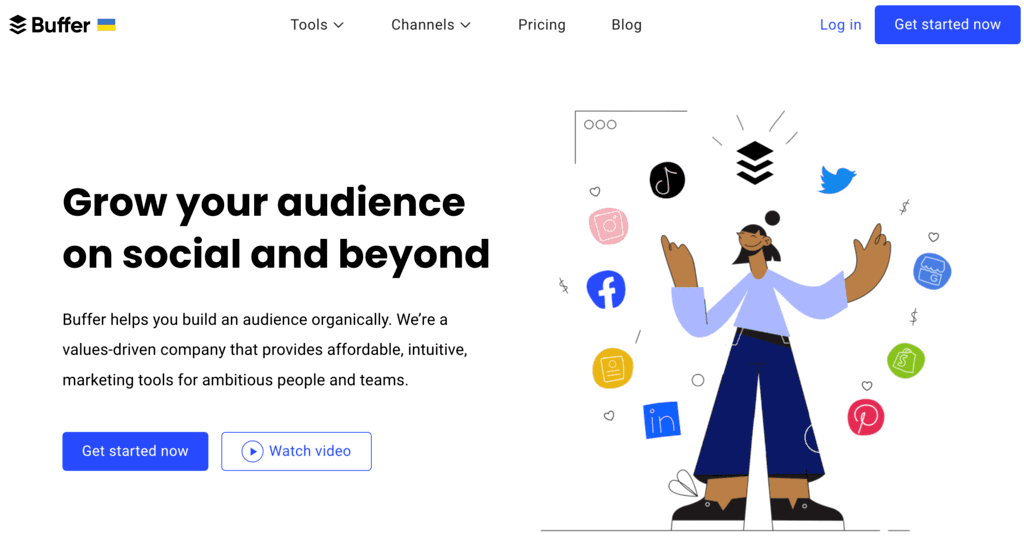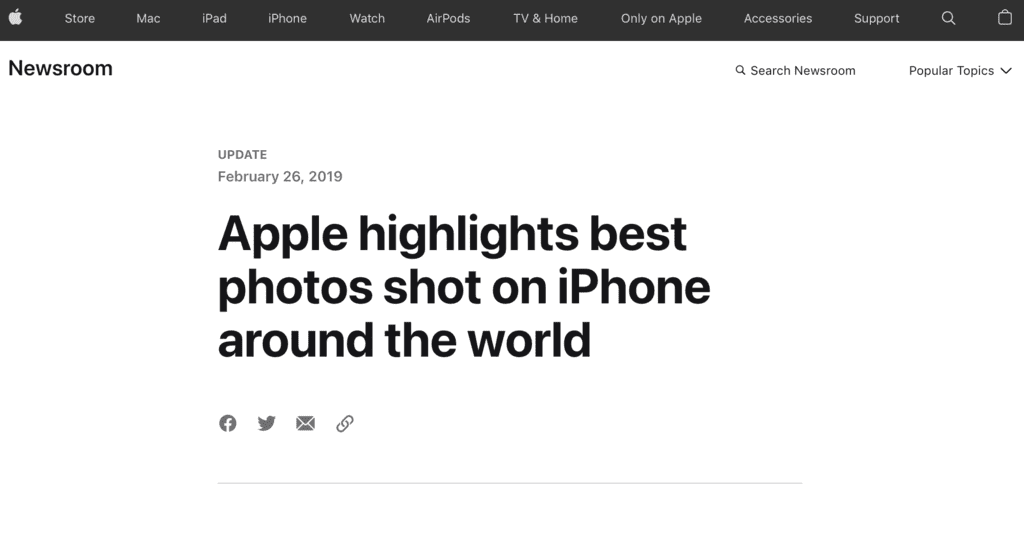By
So, you’re after a few digital marketing examples to inspire your next campaign.
You understand the need for a digital marketing presence, as every statistic you see points towards it…
But where do you start?
Luckily, I’ve picked some of the best examples to get your creative juices flowing.
Let’s jump in!
1. Volkswagen Beetle: The Last Mile
In 2019, Volkswagen (VW) sought to give the iconic Beetle the send-off it deserved after 80 years of production.
They created the digital marketing masterpiece, “The Last Mile.”
You only need to watch the first 30 seconds to be drawn in by its relatable family story.
But why is this a powerful digital marketing example?
What Makes Volkswagen’s Digital Marketing Example So Powerful
Well, where do you begin?
You’re already captivated by its moving story, imagery, and elements of nostalgia.
You’re engaged.
But, the online video was only the beginning…
The campaign included an interactive website where you could “Build Your Own Beetle.”
Further engagement.
Also, VW prompted users to share their designs via social media, creating a sense of community and buzz around the brand.
Engagement times 100, plus increased brand awareness!
What You Can Takeaway from Volkswagen
Yet, what can you takeaway from this?
VW effectively utilized multiple online channels to engage its consumers.
They tapped into social media and leveraged the Beetle’s history and nostalgia to create an emotional connection with their target audience. It generated a sense of community unlike any other.
So, understand your target audience and create content that resonates with them.
2. ALS Ice Bucket Challenge
In 2014, The “Ice Bucket Challenge” was born.
The ALS Association produced a social media masterclass to raise awareness and funds to support research into amyotrophic lateral sclerosis (ALS).
The challenge went viral.
It was a fun and light hearted way to raise awareness about a serious illness.
Everyone from your next-door neighbour to Bill Gates participated.
But why?
What Makes ALS’s Digital Marketing Example So Powerful
For one, they kept it simple.
The challenge was easy to understand and participate in.
Simply sit (or stand) and wait anxiously for a bucket of cold icy water to be poured over you.
Easy…
It evoked many crazy reactions, each with an element of comedy and competition.
Secondly, ALS added a clever call to action (CTA) at the end of each video — nominating others, via social media, to take the challenge.
People nominated friends, family and influencers. It enabled ALS to expand their reach and quickly gain popularity.
What You Can Takeaway from ALS
Regardless of your niche, the “Ice Bucket Challenge” shows you can raise awareness and drive engagement around anything.
Ensure your content is straightforward and resonates with your target audience.
Equally, your content should have a crystal clear CTA.
3. Red Bull’s Stratos Campaign
The highly innovative Red Bull Stratos campaign captured the imagination of viewers by enlisting the help of Austrian skydiver Felix Baumgartner.
In 2012, he jumped from a helium-filled balloon 39 kilometres above the earth’s surface…
Setting a new world record and becoming the first free-falling human to break the sound barrier.
It became the world’s most-viewed live stream event.
What Makes Red Bull’s Digital Marketing Example So Powerful
Yet, why was the “mission to the edge of space” a resounding success?
The hype was real.
Red Bull took to social media to build anticipation for the event.
Not only that, content was king.
They produced a lot…
From a dedicated website full of in-depth statistics to daily updates leading to the live event — readers felt like they were part of the mission.
Moreover, they encouraged readers to share at every opportunity, using hashtags.
The result…
#LIVEJUMP and #STRATOS was trending.
What You Can Takeaway from Red Bull
Red Bull thought outside the box and created a blockbuster campaign that piqued the interest of even the most sceptical of readers.
But it’s not achievable by all.
Yet the lessons are…
Quality content is king.
So, understand your product and continually provide great content that impacts your users.
4. Dove’s Reverse Selfie
In 2021, Dove launched its Reverse Selfie campaign to combat the increasing pressure on young people to look their best online.
The YouTube video features a 13-year-old girl who drastically modifies her appearance before posting a selfie on social media.
As the title suggests, Dove cleverly reversed the editing process to give viewers a glimpse of the number of modifications.
Ending at the beginning.
What Makes Dove’s Digital Marketing Example So Powerful
Dove headed straight to the root cause…
Social media.
They repurposed snippets of the video on Instagram, posted shocking statistics, and sought the help of influencers to boost awareness.
It worked.
Viewers were emotionally charged — many shared unedited photos of themselves and encouraged others to do the same.
#TheSelfieTalk
What You Can Takeaway from Dove
Dove zoomed in and focused on one digital platform…
Social media.
Specifically, Instagram because of its focus on sharing photos.
So, you should too.
Don’t spread yourself too thin.
Pick a digital marketing platform that fits your demographic.
For example, if your brand has a strong visual element, promoting through Instagram or Pinterest may be more beneficial than LinkedIn.
5. Blendtec’s Will It Blend?
Founder of Blendtec, Tom Dickson, created the Will It Blend video series to spice up the appeal of the blender.
It consists of Tom adding unusual items to show off its ability…
Have you ever wondered if your iPhone would blend?
Or even your Amazon Echo when Alexa decides to play a completely different tune to the one you asked for?
What Makes Blendtec’s Digital Marketing Example So Powerful
But what makes Will It Blend a content marketing hit?
Well, each video packs a punch…
The YouTube videos are short and simple yet authentic and entertaining.
This creative recipe draws the viewer in and you really do wonder — @willitblend?
Also, the tag prompts viewers to interact at every opportunity by sharing suggestions.
Plus, Blendtec ensures you don’t miss it. They’ve added the tag to the Youtube channel logo, each video, and webpage.
What You Can Takeaway from Blendtec
Blendtec thought outside the box to increase brand awareness using video marketing and social sharing.
Plus, they’ve proven that you don’t need a flashy, high-cost video campaign to capture your audience’s attention.
So, grab your smartphone and start recording content that peaks your audience’s interest.
6. Smart Blogger’s Affiliate Marketing
Smart Blogger’s affiliate marketing efforts are a prime example of digital marketing done correctly.
Furthermore, they highlight a key point that is worth remembering when considering affiliate marketing:
“You’re earning a commission in exchange for giving readers valuable insights on products or services they were already thinking about purchasing.”
Great!
So what can we learn from one of the world’s largest websites dedicated to writing and blogging…
What Makes Smart Blogger’s Digital Marketing Example So Powerful
Well, Smart Blogger backs up its key point by offering exactly as they state:
Giving readers valuable insights.
Whether it’s a specific review for a product or a collection of products, they ensure value is at the forefront of everything they do.
They soft sell through education.
What You Can Takeaway from Smart Blogger
Smart Blogger proves you don’t have to head straight for the hard sell with ads plastered over your page.
Instead, opt for the soft sell.
Educate.
Offer a resource and tools webpage with snippets of golden information…
Or dive in and create custom content that provides value to your audience.
7. Buffer’s Guest Blogging
Buffer is a social media toolkit for small businesses.
So, why are we talking about guest blogging?
Because they used this content marketing technique to rapidly grow their user base, and we can learn a few things…
What Makes Buffer’s Digital Marketing Example So Powerful
Buffer took a proactive approach.
They continually sought out and pitched to sites that fit their target audience. Knowing that writing for them will help establish themselves as an authority.
Not only that, consistency and personalization were vital.
Guest posting daily, building momentum, and establishing long-term relationships with others transformed Buffer into an industry leader.
What You Can Takeaway from Buffer
The key takeaway is to find out which digital marketing channel works for you and double down.
Don’t spread yourself too thin.
If you choose content marketing and find guest blogging is for you, great!
But don’t reinvent the wheel. Send out personalized messages to find opportunities and follow up with quality content.
8. Old Spice’s The Man Your Man Could Smell Like
Old Spice was predominantly associated with the scent of older men.
But that changed in 2010 when they launched the YouTube video, “The Man Your Man Could Smell Like.”
It went viral.
Old Spice’s website traffic grew by a whopping 300%, and the brand became the #1 body wash for men.
But how did this simple form of content marketing garner such a response?
What Makes Old Spice’s Digital Marketing Example So Powerful
Old Spice used a clever mix of humor and marketing know-how to appeal to its target audience.
But that’s not all.
They backed up their immediate success and kept the viral ball rolling by interacting with their audience on social media in real-time.
Users posted questions and the “Old Spice Guy” answered with personalized videos.
What more could you ask for?
What You Can Takeaway from XYZ
The key takeaway is it’s not enough to create a piece of digital content and expect a response — even if it’s positive.
Follow up, continually engage with your audience, and leave a positive, lasting impression.
Go that extra mile…
Personalize your interactions, and if you can, promptly respond in real-time.
9. Dollar Shave Club’s Our Blades Are Great
In 2012, Dollar Shave Club (DSC) shook up the male grooming industry.
They infused humour into a seemingly dull product.
And the result…
An instant hit.
Their YouTube video amassed millions of views and continues to be shared across social media.
What Makes DSC’s Digital Marketing Example So Powerful
DSC jumped on the social media bandwagon early.
They knew the marketing and advertising space was shifting to its digital counterpart and created content to suit.
Equally, they knew their target audience and products’ unique selling point.
As a result, “Our Blades are F***ing Great” was born on YouTube.
Choosing the digital platform allowed DSC to interact and engage with its audience.
Also, it allowed users to share through social channels easily.
What You Can Takeaway from DSC
Yet, what can you takeaway from this experience?
Adopting change in your niche is crucial.
Whether it’s technology-based or simply a shift in customer demand, you should pivot.
Doing so will allow you to tailor your content and give your customers what they desire.
10. Apple’s Shot On iPhone
Primarily targeting Instagram, Apple’s Shot On iPhone created a digital marketing storm.
They took the term “customer engagement” to a new level with a simple challenge to their audience…
Use your iPhone to capture a photo and submit it by sharing on social media using: #ShotOniPhone
What Makes Apple’s Digital Marketing Example So Powerful
Apple proved your digital marketing campaign can be simple when showcasing a product or service.
They planted a basic idea and allowed their audience to do the rest through participation.
This engagement was vital to building a loyal fanbase.
As a result, Apple’s reach grew, which allowed their product to be viewed by millions of users on digital channels.
What You Can Takeaway from Apple
Apple effectively used digital marketing channels to showcase its product and build brand awareness through customer engagement.
So, take a proactive approach and prompt your audience to participate in your campaign.
What challenge could you present to your audience?
What’s a Great Digital Marketing Example I Missed?
You’ve made it!
So, it’s time…
Time to take action and consider which digital marketing example will inspire your next campaign.












